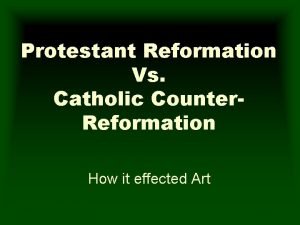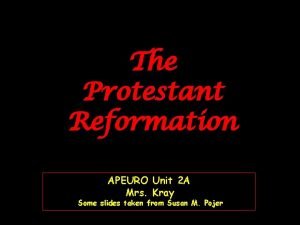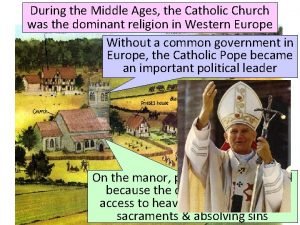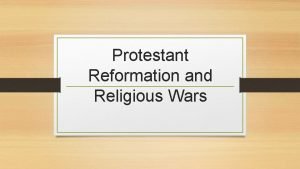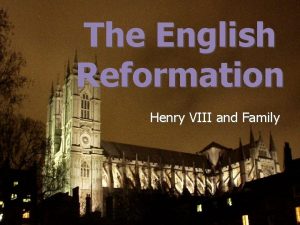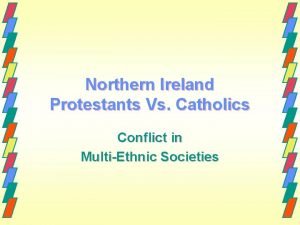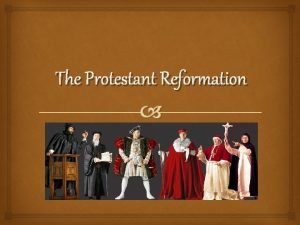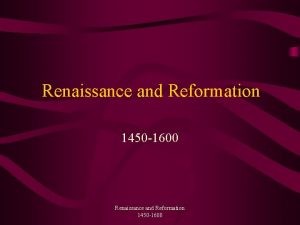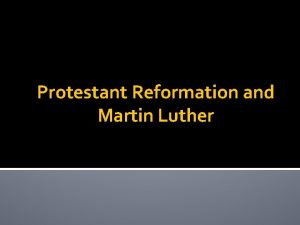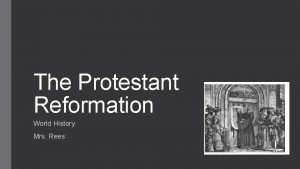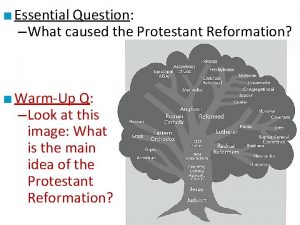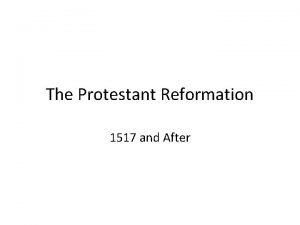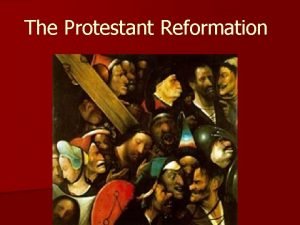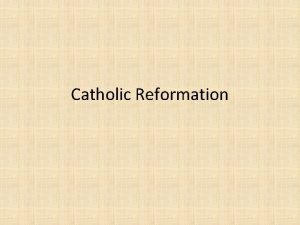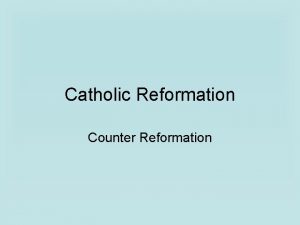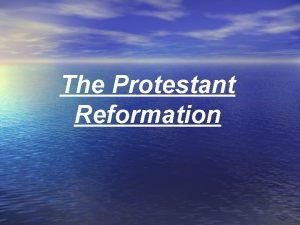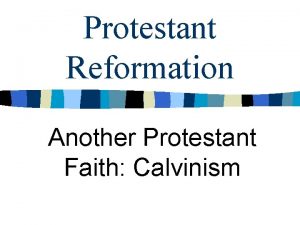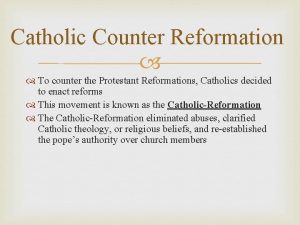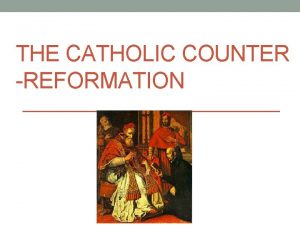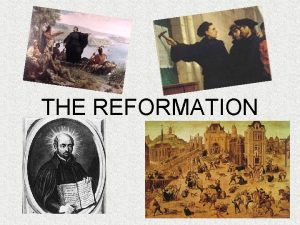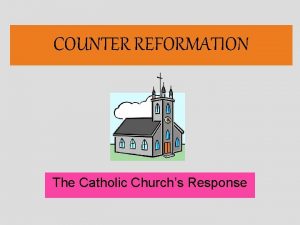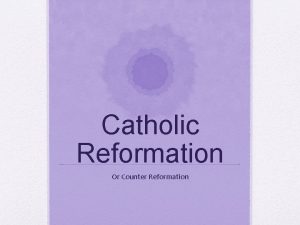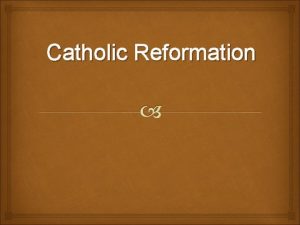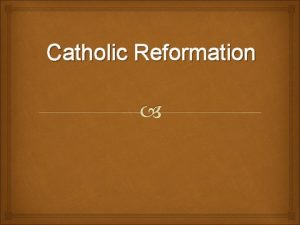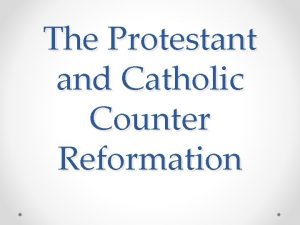Protestant Reformation Vs Catholic Counter Reformation How it















- Slides: 15

Protestant Reformation Vs. Catholic Counter. Reformation How it effected Art

Protestant Reformation • Generally Northern Europe • Began in 1517 when Martin Luther nailed 95 Theses On the Power of Indulgences on a church door. – Basically Luther’s complaints on the ideas of Catholic Church (too strict and corrupt) – The church should be changed (or reformed) so that it was less greedy, fairer and accessible to all people, not just the rich and well educated

Change in Art • During Middle Ages, art focused on religious content with symbolism (not realistic) • Renaissance artists changed symbolist content to realistic humanist content – Michelangelo and Leonardo da Vinci—created paintings and sculptures in idealistic human form (ideal beauty)

Change in Art cont. • Protestant leaders denounced the Catholic imagery as “idol worship” and called for its destruction – Main issues with Protestant Reformation was Catholics worshipping images of Virgin Mary and saints – Protestants believe you can reach God directly through Jesus, not by worshipping saints and the Virgin Mary

The Result • Less images of Bible stories • More images of everyday activities and scenes from nature (Bruegel) • Portrait painting became popular (Titian)

Ideal Beauty? • Martin Luther maintained that humanity is perfection – Result: • Less “perfect” bodies • Less pictures of crucifixion • Less artwork of saints and Virgin Mary • More artwork of modern life and narrative stories from Bible (not idealistic)

• By Jan Van Eyck • Painting of a wedding • Full of symbolism – Not ideal worship of God, but real

Counter-Reformation • In late 1540’s, Catholic Church became “threatened” by Protestants • Formed Council of Trent – Met periodically between 1545 and 1563 to reform the Protestant-Reformation – Decided that art of the church should be direct and not contain symbols or “incidentals” – Nudity should be avoided at all costs – Focus on the Madonna, Saints, and crucifixion

Passion of Christ • Counter-Reformation stated that art should portray God in the “natural beauty of his creation and by depicting people who were created in His image. ” • Art for the church was strictly to be religious for the purpose of glorifying God and Catholic traditions • No “irregular” images

Passion • Lamentation by Scipione Pulzone • Focus directly on crucifixion (no symbols) • Christ is the ideal human image • Perfect Counter. Reformation art

Sistine Madonna • By Raphael • Madonna holding baby Jesus • Two saints: St. Sixtus and St. Barbara • Two cherubs

Protestant Last Supper

Protestant Art • Originally titled Last Supper by Veronese • Regarded as inappropriate by Catholics – Too messy—full of “buffoons, drunken Germans, dwarfs, and other such scurrilities” • Veronese told to change the painting by council of Trent – Name changed to Feast in the House of Levi instead

Counter-Reformation • Corruption of the Roman-Catholic Church was dramatically reformed • Bishops visited churches regularly to keep tabs on clergy and maintain proper worship • No longer threatened by Protestants – Began to branch out

Strength • Counter-Reformation grew stronger and began to take their teachings to other nations – Missionaries to Americas, Africa, India, and Asia – Used art as a means of speaking • Counter-Reformation art can be found all over the world
 Catholic reformation vs counter reformation
Catholic reformation vs counter reformation Protestantism vs catholicism
Protestantism vs catholicism Lutheran vs catholic beliefs chart
Lutheran vs catholic beliefs chart Beliefs of protestants
Beliefs of protestants Protestant vs catholic war
Protestant vs catholic war Catholic vs protestant
Catholic vs protestant The difference between catholic and christian
The difference between catholic and christian Catholic v protestant
Catholic v protestant Problems in the catholic church reformation
Problems in the catholic church reformation Lexaria bioscience corp
Lexaria bioscience corp What is the difference between protestant and catholic
What is the difference between protestant and catholic Protestant reformation political cartoon
Protestant reformation political cartoon Reformation rap
Reformation rap What caused the protestant reformation?
What caused the protestant reformation? Protestant reformation map
Protestant reformation map The protestant reformation crossword puzzle
The protestant reformation crossword puzzle
